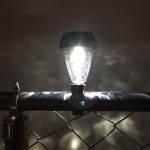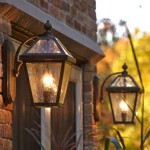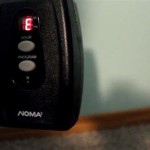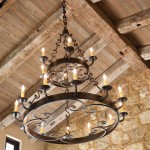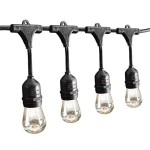How To Do Outdoor Lighting: A Comprehensive Guide
Outdoor lighting serves multiple purposes, enhancing safety, security, and aesthetic appeal. Careful planning and execution are crucial to achieving desired effects without creating light pollution or unnecessary energy consumption. This guide provides a comprehensive overview of the process, from initial planning to final installation.
Planning and Design Considerations
Before purchasing any fixtures or beginning installation, a thorough assessment of the property and desired outcomes is necessary. This phase involves analyzing existing structures, landscaping features, and intended uses of outdoor spaces.
The first step involves identifying areas requiring illumination. These might include walkways, driveways, patios, decks, gardens, and specific architectural features. Consider the primary purpose of lighting each area. For example, walkway lighting should prioritize safety by providing clear pathways, while garden lighting might focus on accentuating plants and creating a relaxing ambiance.
Next, assess the existing ambient light levels. Factors such as streetlights, neighboring properties, and moonlight influence the perceived brightness of outdoor lighting. Aim to supplement existing light intelligently, avoiding over-illumination that can detract from the overall aesthetic and disrupt natural environments.
Develop a lighting plan that incorporates different types of fixtures and lighting techniques. Layered lighting, combining ambient, task, and accent lighting, creates visual interest and versatility. Ambient lighting provides overall illumination, while task lighting focuses on specific activities, such as grilling or reading. Accent lighting draws attention to particular features, like trees or architectural details.
Consider the architectural style of the house and the overall landscape design. The lighting should complement these elements, not clash with them. Choose fixtures that blend seamlessly with the surroundings, both in terms of style and materials.
Energy efficiency is a paramount consideration. LED (Light Emitting Diode) fixtures offer significant energy savings compared to traditional incandescent or halogen options. They also have a much longer lifespan, reducing maintenance requirements. Look for fixtures with appropriate energy ratings and consider using timers or motion sensors to minimize energy consumption.
Dark-sky compliance is an increasingly important consideration in many regions. Dark-sky ordinances aim to minimize light pollution by preventing light from shining upwards into the night sky. Choose fixtures that direct light downwards and avoid fixtures with excessive brightness or glare. Look for fixtures that are certified by the International Dark-Sky Association (IDA).
Finally, create a detailed budget. Outdoor lighting projects can range from simple DIY installations to complex professional designs. Estimate the cost of fixtures, wiring, installation materials, and any professional labor required. Comparing prices from different suppliers and contractors can ensure cost-effectiveness.
Selecting Fixtures and Equipment
Choosing the right fixtures is essential for achieving the desired lighting effects and ensuring durability and longevity. A wide variety of fixture types are available, each suited for specific applications.
Path lights are designed to illuminate walkways and driveways. They typically feature low-wattage bulbs and downward-facing shields to direct light towards the ground. Choose path lights that are sturdy and weather-resistant, able to withstand foot traffic and exposure to the elements.
Floodlights provide broad illumination for large areas, such as yards or driveways. They are often used for security purposes, deterring potential intruders. Select floodlights with adjustable heads to direct light where it is needed most. Consider using motion sensors to activate floodlights only when movement is detected.
Spotlights are used to highlight specific features, such as trees, sculptures, or architectural details. They typically have narrow beams of light that can be focused on a specific point. Choose spotlights with adjustable angles and brightness levels to create dramatic effects.
Deck and patio lights provide ambient lighting for outdoor living spaces. They can be integrated into railings, steps, or furniture. String lights are a popular option for creating a festive atmosphere.
Underwater lights are used to illuminate ponds, fountains, or swimming pools. They must be specifically designed for underwater use and rated for submersion. Choose underwater lights that are safe and energy-efficient.
Low-voltage lighting systems are a popular choice for outdoor lighting because they are safe and easy to install. They operate on 12 volts of electricity, reducing the risk of electric shock. Low-voltage systems require a transformer to convert standard household voltage to the lower voltage. The transformer must be sized appropriately to handle the total wattage of all the fixtures in the system.
Wiring and connectors must be weatherproof and suitable for outdoor use. Use direct burial wire for underground installations and ensure that all connections are properly sealed to prevent water damage.
Consider smart lighting options that allow remote control and automation. Smart lighting systems can be controlled via smartphone apps or voice commands. They can also be integrated with other smart home devices, such as security systems and thermostats.
Installation Best Practices
Proper installation techniques are crucial for ensuring the safety, reliability, and longevity of outdoor lighting systems. Adherence to electrical codes and manufacturer instructions is essential.
Before beginning any electrical work, disconnect the power supply to the circuit. Use a voltage tester to verify that the circuit is de-energized. Never work on electrical circuits while they are live.
Dig trenches for underground wiring. The depth of the trenches should comply with local electrical codes. Typically, wiring must be buried at least 6 inches deep. Use a shovel or trenching tool to create the trenches carefully. Avoid damaging underground utilities, such as water pipes or gas lines.
Run the wiring through the trenches and connect it to the fixtures. Use waterproof connectors to ensure that the connections are protected from moisture. Follow the manufacturer's instructions for wiring the fixtures and the transformer (if using a low-voltage system).
Secure the fixtures to the ground or to structures using appropriate mounting hardware. Ensure that the fixtures are stable and cannot be easily knocked over. Consider using concrete footings for fixtures that are installed in soft soil.
Test the lighting system before closing the trenches. Turn on the power supply and verify that all the fixtures are working properly. Check for any loose connections or short circuits. If any problems are detected, troubleshoot the system and correct the issues before proceeding.
Backfill the trenches with soil and compact the soil to prevent settling. Re-seed or replant any grass or plants that were disturbed during the installation process.
Install timers or motion sensors, if desired. Program the timers to turn the lights on and off at specific times. Adjust the sensitivity of the motion sensors to prevent false alarms. Consider integrating the lighting system with a smart home system for remote control and automation.
Regularly inspect the outdoor lighting system for any signs of damage or wear. Replace any damaged fixtures or wiring promptly. Clean the fixtures periodically to remove dirt and debris. Trim any vegetation that is obstructing the light output.
Consult a qualified electrician for any complex electrical work or if you are unsure about any aspect of the installation process. Improper installation can be dangerous and can void warranties.

28 Backyard Lighting Ideas How To Hang Outdoor String Lights

Do S And Don Ts For Outdoor Lighting Perspectives

Landscape Lighting Design Overview

41 Diy Outdoor Lighting Ideas

19 Stylish Outdoor Lighting Ideas The Best Patio

Diy Backyard String Lights Taryn Whiteaker Designs

How To Use Outdoor Lighting Effectively Know More

How Do You Plan Outdoor Landscape Lighting Mll

How To Install Outdoor Lighting And Diy Family Handyman

What You Need To Know About Outdoor Lighting
Related Posts
